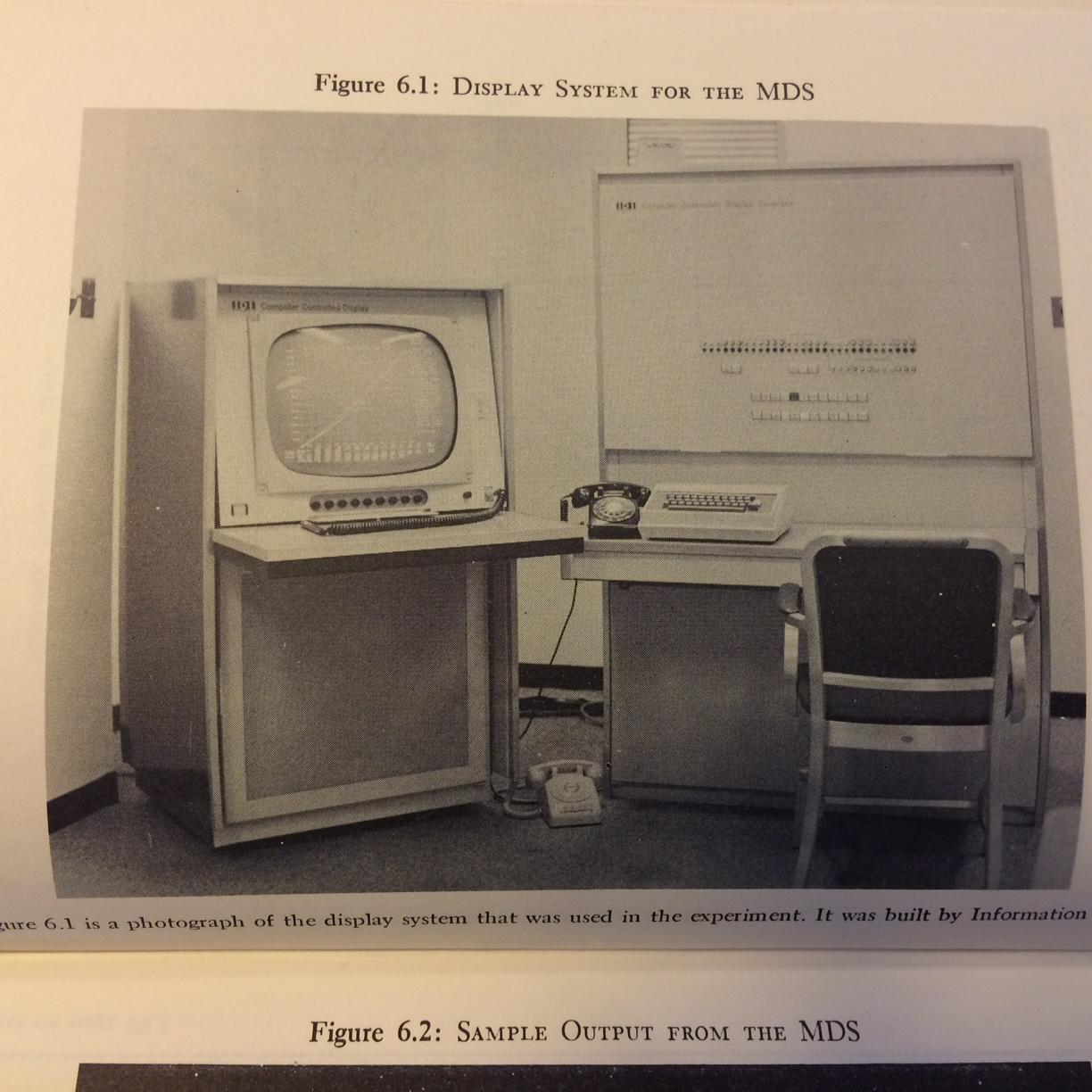
As part of our dashboard genealogy which we are undertaking as one of our research themes, we came across some IBM advertisements from the early 60’s. In the ad shown here for example IBM promoted some of their systems that aided in business decision making and control (International Electric Accounting and Tabulating Machines, International Time Recorders and Electric Time Systems, International Industrial Scales, etc.). It is interesting to note how a) the rhetoric around computer’s affordances sounds quite contemporary (the ad states ‘the operating speed and the flexibility of these machines enable management to maintain constant control…information is alive-up-to-the-minute’) and b) the radical contrast between these ads as forms of publicity and today’s practices of product launches (think Steve Jobs, Mark Zuckerberg undertaking live product demonstrations).
Also as part of our dashboard genealogy we are looking at the history of Decision Support Systems (DSS). The picture shown below is arguably one of the first DSS designated as such.

Designed by Michael S. Scott Morton in 1967 as part of his doctoral thesis at Harvard University, the system was introduced as an experiment to understand whether human/machine interaction, in particular with regards to the display of graphs and interactive media, could affect decision making processes within organisational settings. The system comprised the following components: a typewriter terminal, a visual device for alphanumerical and graphical displays, a light-pen, connection equipment (the visual display was already remote from the computer facility at that time) and a central computer. The experiment undertaken by Morton when placing this system as part of a commercial organisation concluded – among other things – that the system had a problem resolution but also a problem definition effect. This was because since the introduction of the system, managers became better equipped at identifying management problems which were previously unidentifiable via traditional means. Scott Morton noted that:
Computer driven visual display devices have an immediate appeal. Graphics for engineering design work and the vast array of military applications have insured that the manufacturers will continue to produce such devices. The sight of the engineer or scientist at work on his graphics console provides a clear demonstration that man/machine communication is possible in some fields. (1971, 4)